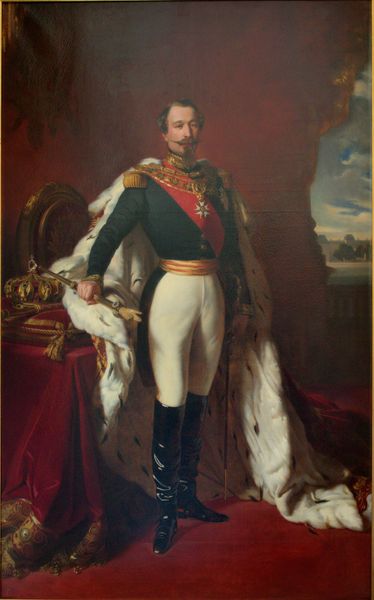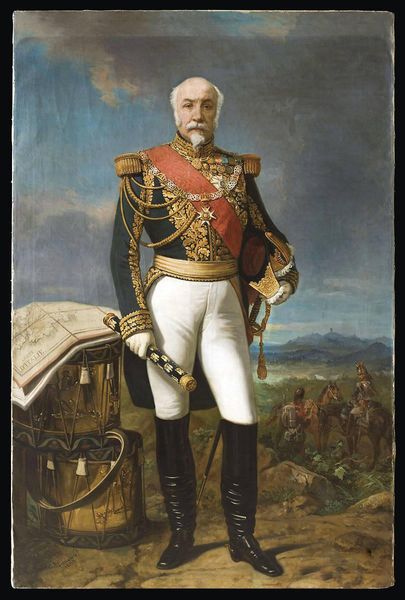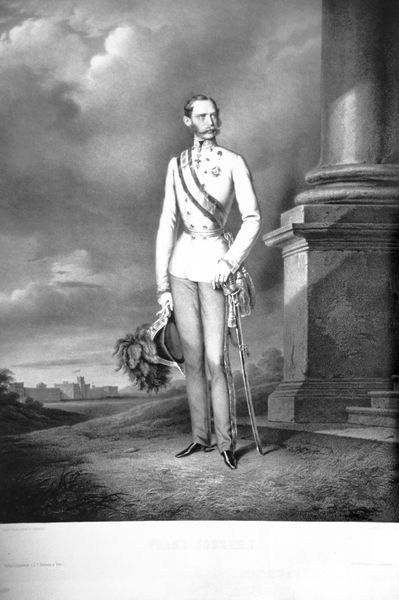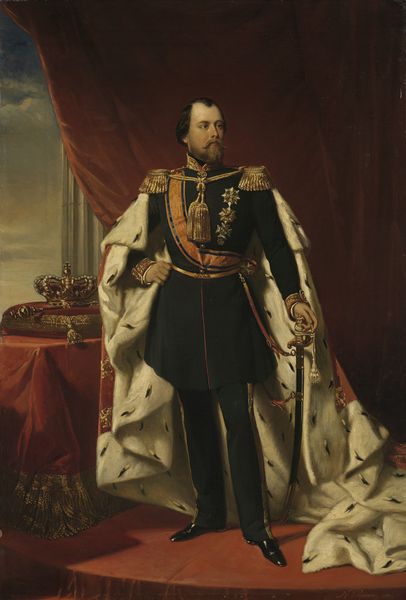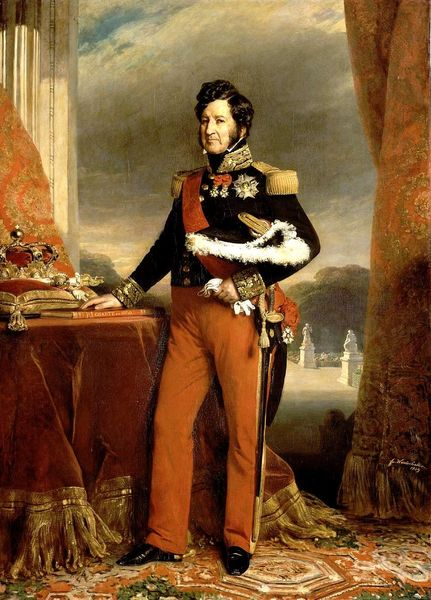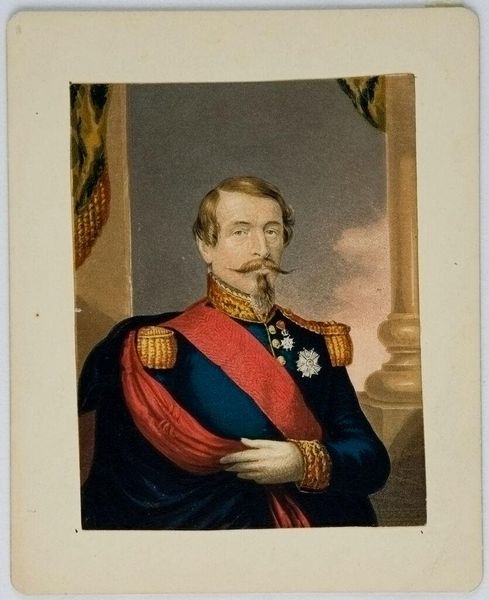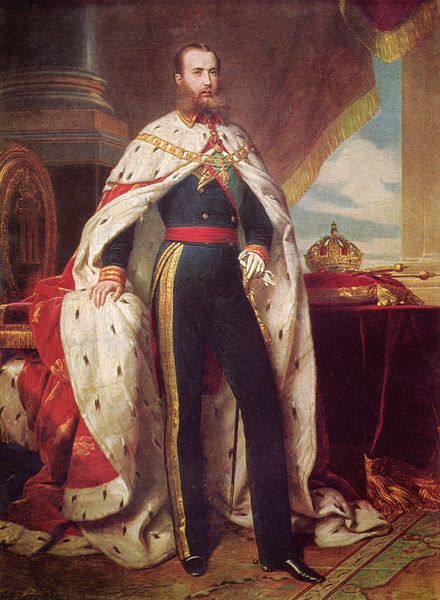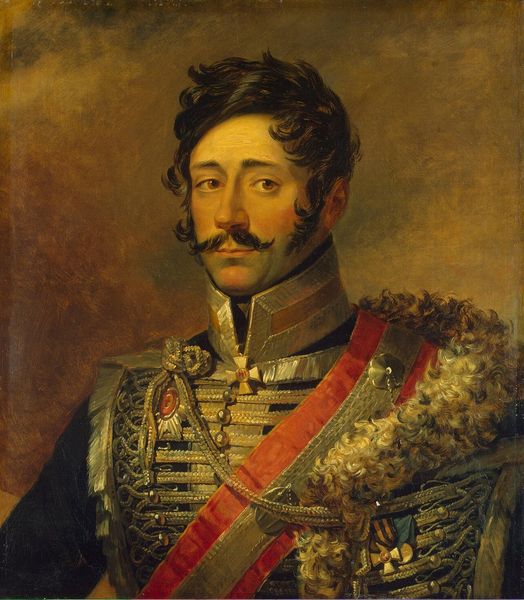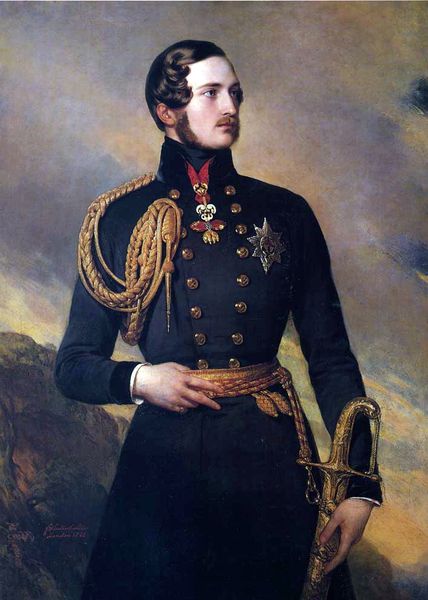
Copyright: Public domain
Editor: This is Konstantin Makovsky's "Portrait of Alexander II of Russia," painted in 1860, using oil. There's a formality here, a deliberate construction of power, but also… almost a fragility in his eyes. What story do you think this image is trying to tell, seen through the lens of its historical moment? Curator: Well, portraits of rulers are never just about capturing a likeness. This was painted just before Alexander II embarked on major reforms, including the emancipation of serfs. Look at how he’s framed by both the trappings of the Romanovs, like the military uniform, but also that column and red drape in the background which signal both power and tradition, while on the other hand you notice the face does not look completely sure of his decisions. Editor: So, the painting functions as a kind of… carefully managed propaganda? Promoting an image of both strength and progressive change? Curator: Exactly! And it speaks to the very tightrope Alexander was walking. He was an autocrat enacting liberal reforms. What audience was this painting really intended for? Was it to reassure the nobility of continuity, or signal to the public that reforms were underway? Editor: I guess the staging—the column, the luxurious fabric—speaks to the traditional elite. Curator: Absolutely, yet the very act of commissioning a portrait signals engagement with modern modes of communication, reaching beyond the immediate court. The piece serves a critical role for public imagery. Notice the pose; its neither commanding nor friendly, leaving Alexander on the sidelines to comment on things. Editor: It's fascinating how much a single portrait can reveal about the anxieties and ambitions of a particular moment in history. It feels much less like a neutral depiction now. Curator: Indeed, and analyzing this piece, it reinforces how artistic production and power are inevitably intertwined. Hopefully now we appreciate why someone decided to put it up on a museum's wall. Editor: I learned that nothing can just be viewed from the face-level; you always need context, historical implications and, more importantly, a lot more digging. Thanks!
Comments
No comments
Be the first to comment and join the conversation on the ultimate creative platform.
